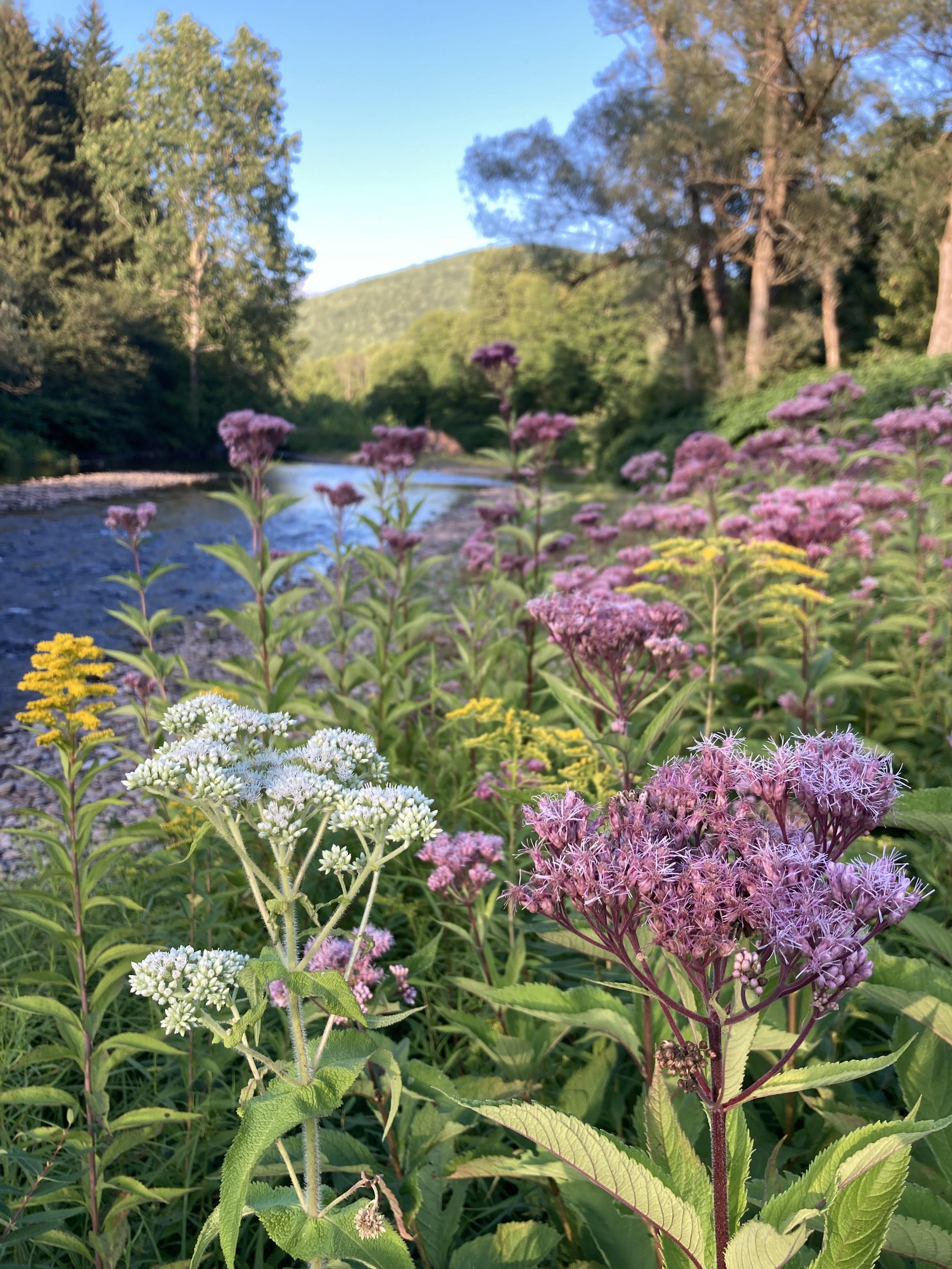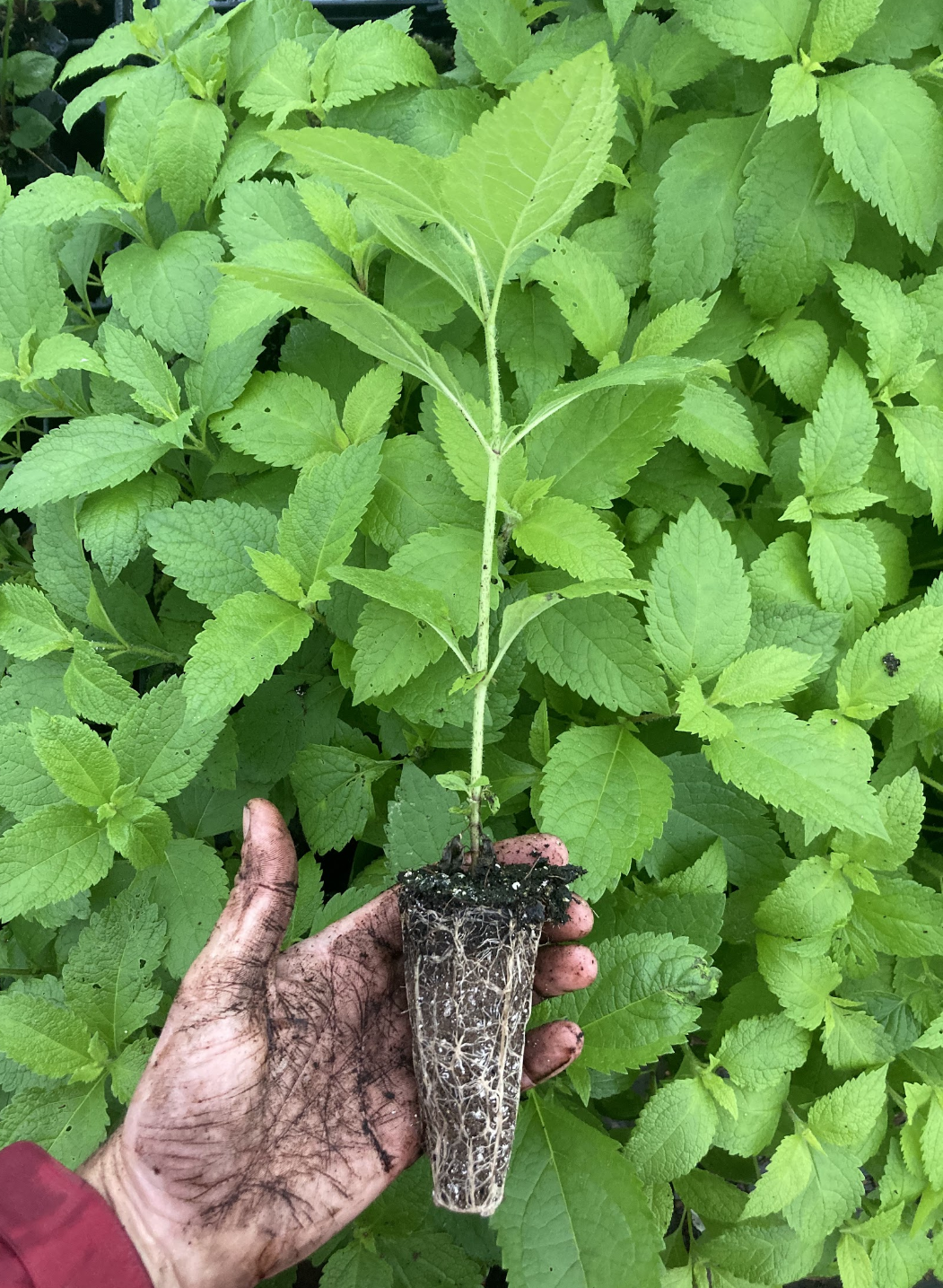
Plug Trays 2025PLUG TRAY ORDERS ARE NOW CLOSED FOR 2025
Our native plugs are seedlings with well-developed root systems that come 50 to a tray. They are an efficient and economical way to add biodiversity to the landscape. This year we’re offering over 50 species, nearly all of which are of a Catskill Mountain or Hudson Valley ecotype. You can build your own tray with up to five species, or select from one of our predesigned ‘Garden Kits’.
We grow plug trays for landscapers, gardeners, homeowners, farmers, and anyone else interested in adding biodiversity to the land. Our order form will be updated as species sell out.
We plan for our plug trays to be ready for pick up or delivery in mid June. Every plant is started from seed in the spring, and weather can influence maturity rates. If you would like your tray(s) well before or after our expected availability date, please let us know at the time of ordering.
New for 2025: Plug Garden Kits
-

Dry Shade Kit - $135
Where many plants struggle, others thrive. This tray has 10 plants each of the following five species-
Anemone virginiana, tall thimbleweed
Eutrochium purpureum, sweet Joe Pye
Diervilla lonicera, northern bush honeysuckle
Penstemon hirsutus, hairy beardtongue
Symphyotrichum cordifolium, heart-leaved aster
-

Dry Sun Garden Kit - $135
The toughest native perennials for dry, full sun conditions. Once established, these plants will not need additional watering. Includes ten plants each of the following five species-
Monarda fistulosa, wild bergamot
Penstemon digitalis, foxglove beardtongue
Pycnanthemum virginianum, Virginia mountain mint
Pycnanthemum muticum, blunt mountain mint
Symphyotrichum patens, late purple aster
-
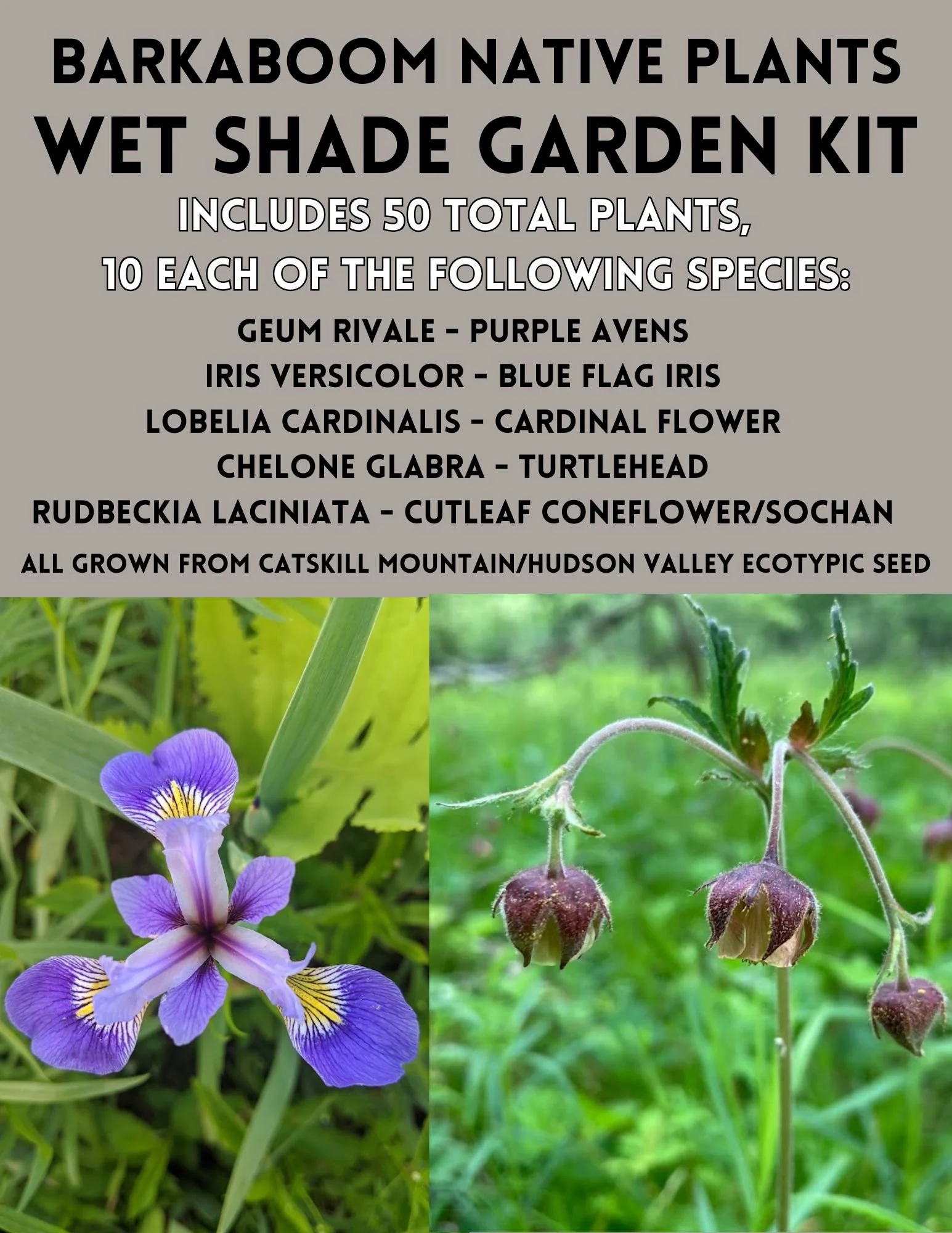
Wet Shade Garden Kit - $135
Plants for wet, shady conditions. These plants can take seasonal flooding and will flower and thrive in the shadiest conditions. Includes ten plants each of the following five species-
Geum rivale, purple avens
Iris versicolor, blue flag iris
Lobelia cardinalis, cardinal flower
Chelone glabra, turtlehead
Rudbeckia laciniata, Cutleaf coneflower
-

Wet Meadow Garden Kit - $135
Damp soil in full sun can foster some of the loveliest meadows in the Catskills. This tray includes ten plants each of the following five species-
Asclepias incarnata, swamp milkweed
Eutrochium maculatum, spotted Joe Pye
Helenium autumnale, sneezeweed
Symphyotrichum puniceum, purple stemmed aster
Verbena hastata, blue vervain
-
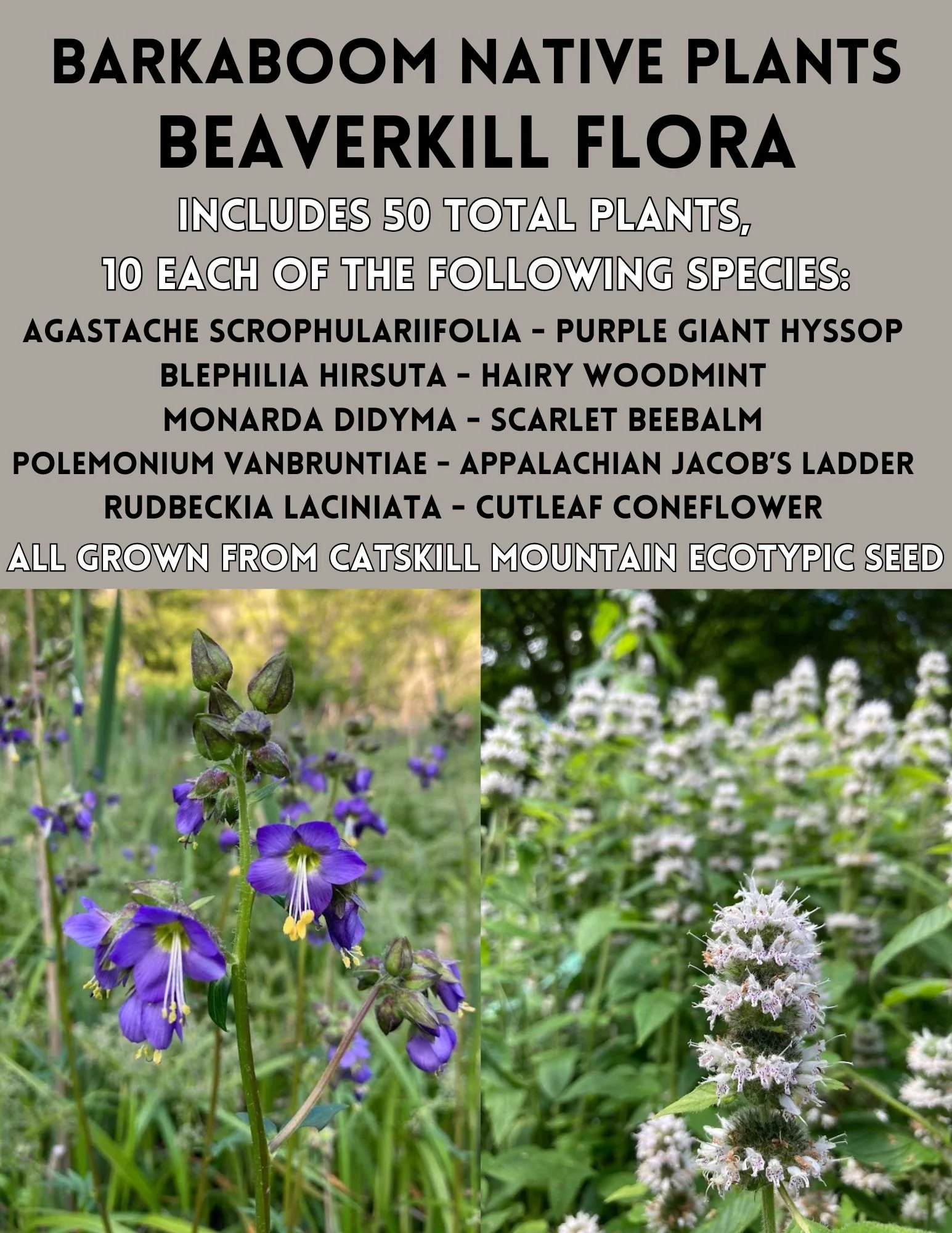
Beaverkill Flora Garden Kit - $135
The valley of the Beaverkill is one of the most remote in the Catskill mountains and harbors many plants uncommon elsewhere in the region. This tray recreates the ecological community of those remote headwaters. It includes ten plants each of the following five species-
Agastache scrophulariifolia, purple giant hyssop
Blephilia hirsuta, hairy woodmint
Monarda didyma, scarlet beebalm
Polemonium vanbruntiae, Appalachian jacob’s ladder
Rudbeckia laciniata, cutleaf coneflower
-
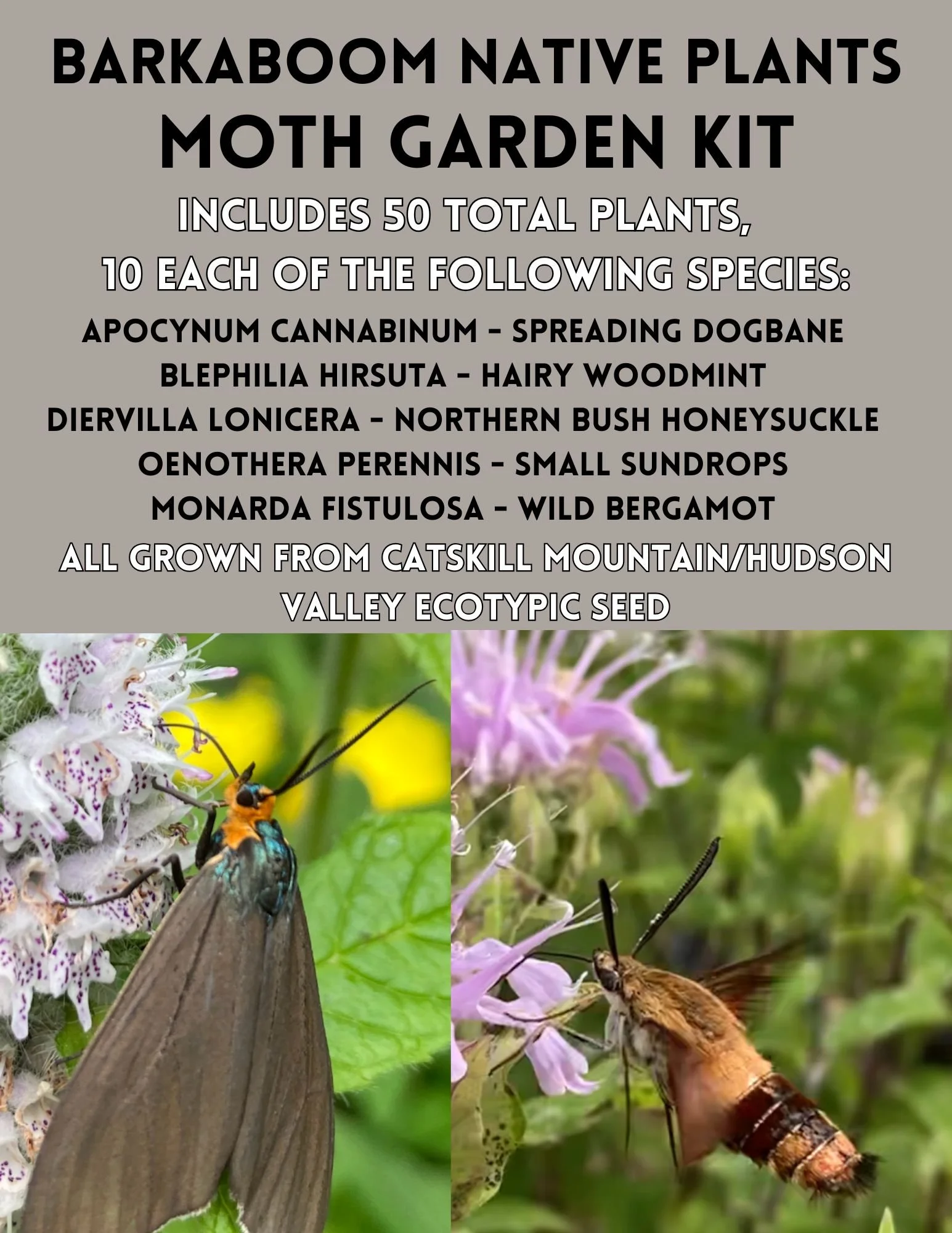
Moth Garden Kit - $135
Moths are frequently overlooked but serve as important pollinators for many native plants. Their larvae is also a major food source for the chicks of many birds. For the Moth Garden Kit we’ve selected plants that serve as both larval host plants and sources of nectar to attract and support moth populations at all stages of life. It includes ten plants each of the following five species-
Apocynum cannabinum, dogbane
Blephilia hirsuta, hairy woodmint
Diervilla lonicera, northern bush honeysuckle
Oenothera perennis, small sundrops
Monarda fistulosa, wild bergamot
Why grow local ecotypes?
We strive to locally source seed for as many native wildflowers, grasses, trees and shrubs as possible. This seed, responsibly collected from robust wild populations in the greater Catskills region, is then used to grow out ‘founder plots’ which we can utilize as a seed source for our nursery plants. By using locally adapted ecotypes in your garden or landscaping projects, you are helping to conserve our local flora as well as the myriad animals that rely on native plants.
